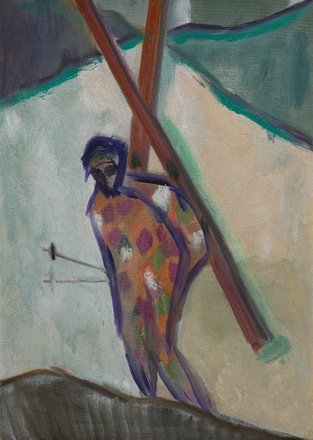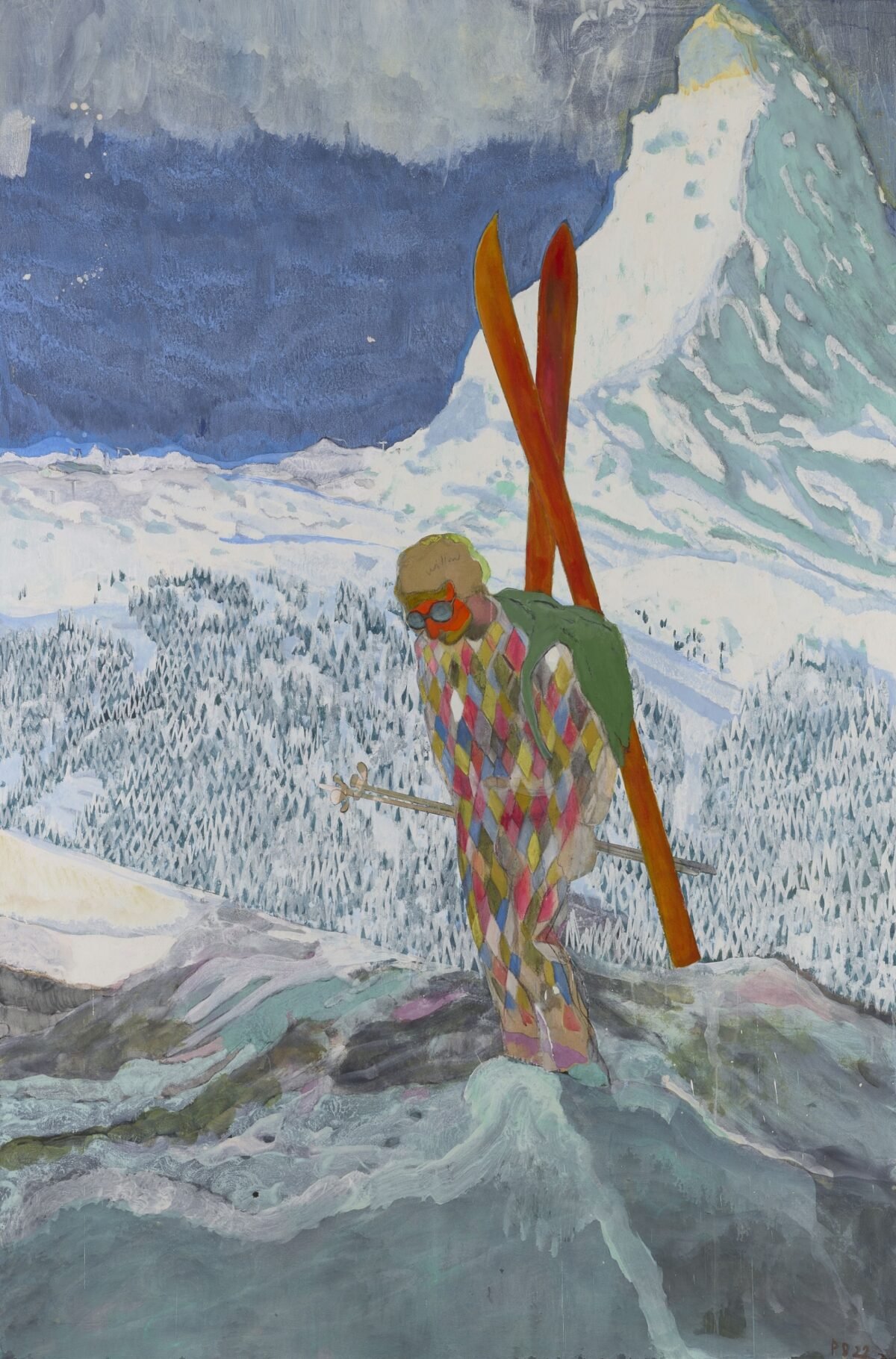fig. 1. peter doig, alpiniste, 2022, pigment on canvas, copyright peter doig copyright dacs 2023
For someone who has moved so often, Peter Doig holds on to things for a long time. For example, a postcard he bought in Chamonix in 1979: now over 40 years later, this image’s central figure of a skier has entered Doig’s pictorial world in the form of the painting upon which this edition is based (fig. 1). Having started work on the “Alpinist” while still living in Trinidad, Doig took his canvas with him for a stay in Zermatt during the height of the pandemic in 2020, when most European ski resorts – except Swiss ones – were closed. Vintage posters featuring the Matterhorn and a crucified Christ nailed directly onto the wall of Doig’s chalet-cum-studio also found their way into the composition.
The production of the “Alpinist” painting stretches across various contexts. The edition’s motif evokes many more. With an air of both the sometimes lonesome adventure of high alpine sports and the most sacred sacrifice of Christianity around him, the climbing skier carries the cross of his wooden planks. The poles sticking out from behind his torso take a stab at the iconography of Saint Sebastian’s martyrdom as well. From the look of it, our sportsman could be wearing a retro overall.
But as a comparison with the painting “Alpinist” (2019–22) reveals, the colorful blotches reference the garb of a harlequin, placing the figure in an art historical tradition to which painters such as Paul Cézanne and Pablo Picasso have contributed. Unlike the facial features of the skier in the painting, those of the figure in the edition – mainly comprising of two large black spots for eyes – render this “Alpinist” more dead than alive, as if sacrificed on the altar of Swiss ski commerce.


